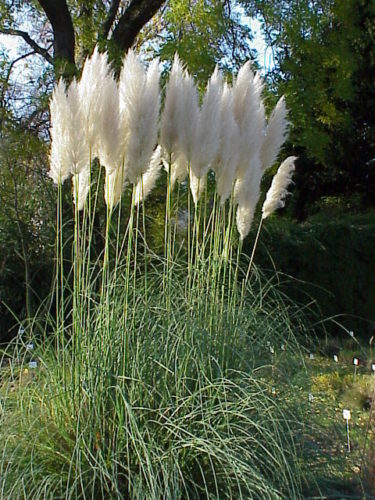Pampas grass is an ornamental grass that has about 25 species.
You are viewing the mobile-adapted version of the page.
The one for tablets, laptop and desktop also provides general information, such as origin, toxicity and cultivation.
Pampas grass – (Cortaderia), is an ornamental grass that has about 25 species. Pampas gras
In the UK and Ireland it is mainly the female plants of Cortaderia selloana that are offered for sale, because the female plumes are larger and whiter than those of the male specimens.
Pampas grass tolerate sun and (sea) wind well and are also not picky about soil. They prefer moist, well-drained soil. Being native to arid regions, pampas grass is sensitive to excess water in winter. Tying up the tussock prevents rainwater from seeping into the heart of the plant and causing root rot.
After winter, in early spring before the plant sprouts, prune back pampas grass to the tussock: 20 to 30 cm above the ground. Fertilize regularly (spring).
In Australia, pampas grass is considered an invasive pest that threatens native Australian plant species and poses a huge fire risk. It is illegal to sell pampas grass in parts of New South Wales that include greater Sydney and the Hunter region.
Bugs
Does not apply.
Fungi & diseases
Stems and culms weaken, soften and bend over: excess moisture causes root rot or mildew.
Other
The pampas grass does not flower: to bloom, the pampas grass needs a lot of heat. If the plant is in a cool, windy spot in the shade, it will have difficulty blooming.

